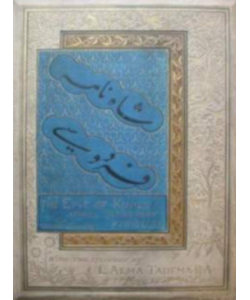The Epic of Kings: Stories Retold From Firdusi

Content:
Shahnameh (The Book of Kings) by Ferdowsi
Illustrator:
L. Alma Tadema
Original title:
شاهنامه
Original author:
Ferdowsi
Original language:
Classical Persian
Translator:
Helen Zimmern
Publication:
1882 by T. Fisher Unwin Ltd.
Genre:
Fiction, Folk Tales, Historic Tales and Legends
Pages:
339
Current state:
Basic information has been added for this book.
It is under consideration and will be updated when it is evaluated further.
Book Guide
Search for this book used on:
The three sons of Feridoun the Glorious, who ruled the world, were: Silim, the prudent; Tur, the courageous; and Irij, both prudent and brave. When the land of Feridoun was divided after his death, Irij was given Iran. He and his heirs ruled with great power; but the power of the grandson of Irij, Minuchihr, was greatest of all because the captain of his army was Saum.
In due time a child, called Zal, was born to Saum and his wife. Because Zal was born with white hair, he was thought to be a child of ill omen. Saum dared not let him live and had him placed on a lonely mountaintop to die of exposure. There a great bird called the Simurgh rescued him and reared him. When Zal became a man he was reunited with his father, married a woman named Rudabeh, and became the father of Rustem.
The stories of these great Persian heroes were passed on by storytellers for many years, although some are said to have been written down as they happened in the sixth and seventh centuries. The oft-repeated legends and the written records were collected in about 1000 by a man named Firduisi in a book he called The Shah Nameh, The Book of Kings.
From Hero Tales From Many Lands
To view an example page please sign in.
Content Guide
Please sign in to access all of the topics associated with this book and view other books with the same topics.
Please sign in to access the locations this book takes place in and view other books in the same location.
Please sign in to access the time periods this book takes place in and view other books in the same time period.
Find This Book
Search for this book used on:


